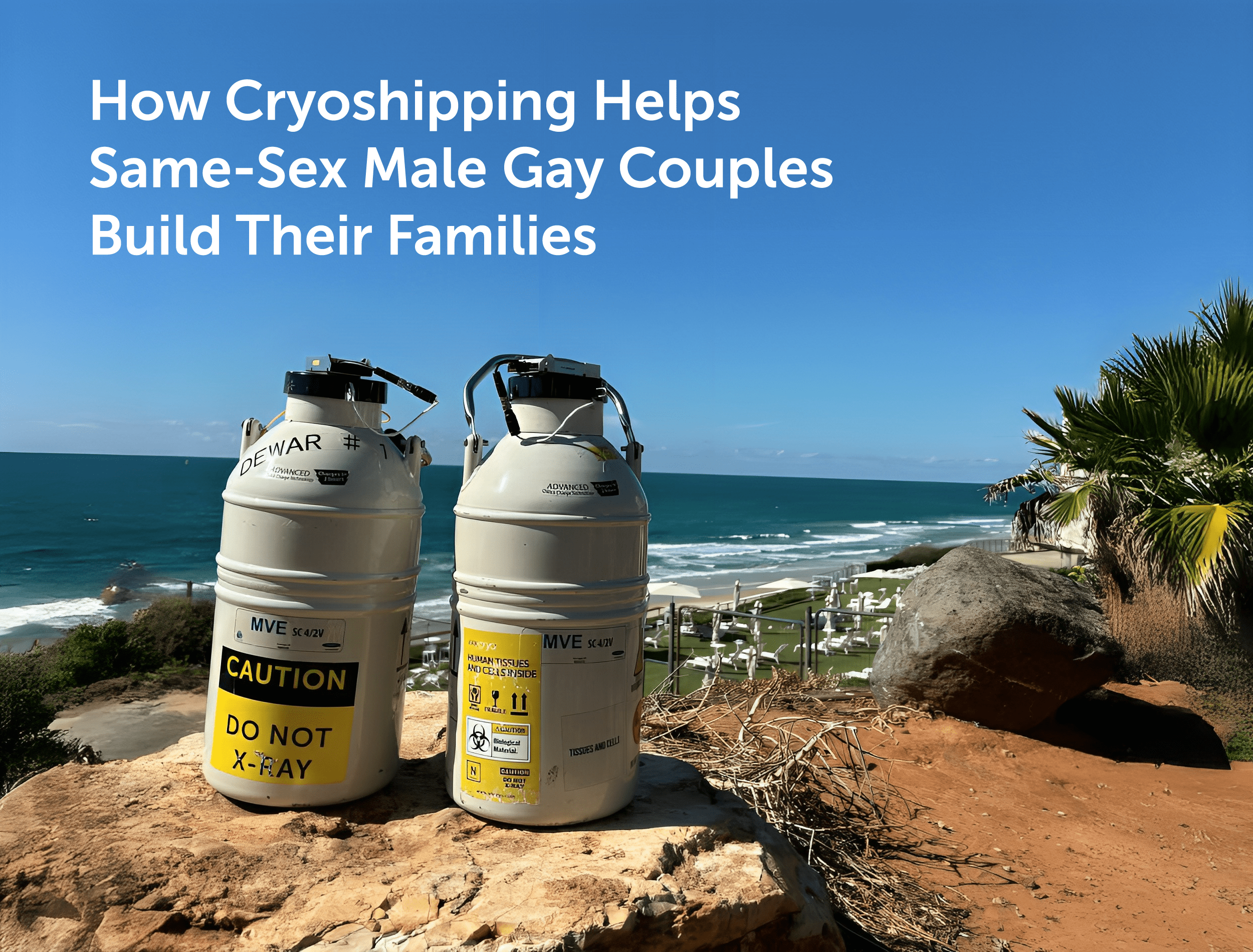START YOUR JOURNEY
For many gay couples, building a family involves navigating a complex web of legal, medical, emotional, and logistical challenges. Assisted reproductive technologies (ART), such as IVF, egg donation, and surrogacy, play a central role in the journey to parenthood. One often overlooked yet crucial aspect of this process is the secure transportation of reproductive biomaterials across borders.It is where cryoshipping for IVF becomes essential. Cryoshipping ensures that sensitive materials, such as sperm, eggs, and embryos, can travel safely and efficiently between clinics, donors, and surrogates, no matter the distance. For gay couples, cryoshipping bridges geographic and legal gaps, providing access to the best reproductive options worldwide and helping turn the dream of parenthood into a reality.
Cryoshipping refers to the specialized transport of frozen reproductive tissues, such as sperm, eggs, and embryos, under strictly controlled cryogenic conditions. These biomaterials are preserved at ultra–low temperatures (typically –196°C) using liquid nitrogen, ensuring their viability from the point of freezing to their final destination.
Cryoshipping is especially important for same–sex male couples, who often work with egg donors and surrogates in different countries. If not handled well or exposed to temperature changes, these delicate materials may lose their effectiveness, putting the success of the IVF cycle at risk. Cryoshipping provides a secure, accurate, and legally compliant way to support the family-building journey.
How Cryoshipping Works – Step by Step
Cryoshipping involves a carefully planned sequence of steps to guarantee the secure and compliant transfer of reproductive biomaterials.
Step 1 – Gamete Collection & Safe Freezing
The process begins at an IVF clinic or donor facility, where sperm, eggs, or embryos are collected and cryopreserved. Gay couples typically start by collecting sperm from one or both partners and selecting an egg donor. Methods such as vitrification or slow freezing are employed to maintain the integrity and viability of the cells during storage and shipping.
Step 2 – Specialized Packaging & Temperature Control
After freezing, the biomaterials are placed into dry shippers – specialized containers that preserve cryogenic temperatures for up to two weeks without the need for electricity. These tanks are vacuum–sealed, insulated, and equipped with temperature sensors and GPS tracking, ensuring the materials stay stable and secure throughout the journey.
Step 3 – International Transport, Permits, and Customs
Transporting biomaterials across borders requires more than just logistics – it involves a deep understanding of international regulations, bioethics laws, and customs requirements. Cryoshipping providers manage the necessary documentation, permits, and legal compliance to ensure that the materials arrive safely and on time, without legal complications. This step is especially crucial for gay couples working with surrogates or clinics abroad, as regulatory requirements can vary significantly between countries.
Why Cryoshipping Is Essential for LGBTQIA+ Families
Cryoshipping has become a vital service for many LGBTQIA+ families navigating international surrogacy or egg donation processes. It ensures that the materials crucial for family–building are transported safely, securely, and in full compliance with global regulations.
For gay couples, cryoshipping at ARK.CRYO facilitates access to the best reproductive options, regardless of location. It enables collaboration with donors and surrogates in different countries, helping to navigate the logistical and legal complexities of building a family internationally.
With the infrastructure and expertise in place, cryoshipping provides peace of mind to couples pursuing parenthood, allowing them to focus on what truly matters – starting their family.
